LIJIANG, CHINA - Daylight is fading when we set out in the direction of the Tea Horse Road — southern China’s version of the Silk Road — which is just outside this renowned UNESCO World Heritage city.
For centuries, courageous riders used the narrow, treacherous Tea Horse Road to transport precious Puer Tea and other goods on mules from Tibet to this mountain capital of Yunnan province.
The journey normally took six months but many men vanished along the route, which was always stalked by bandits.
Our kidney-rattling ride to reach the historic route takes us pass indigenous people — more than 20 ethnic minorities live in this vast valley — selling Yunnan’s famed giant peaches (think pink apples with a fuzzy skin) at the roadside.
We also see lots of saddled horses waiting for riders. That’s when Christina, our guide, informs us “you have to ride a horse when we get to the Tea Horse Road.”
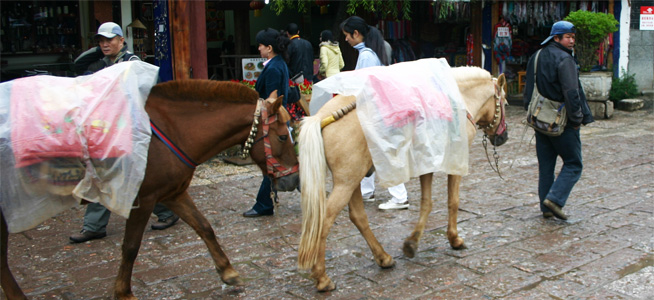
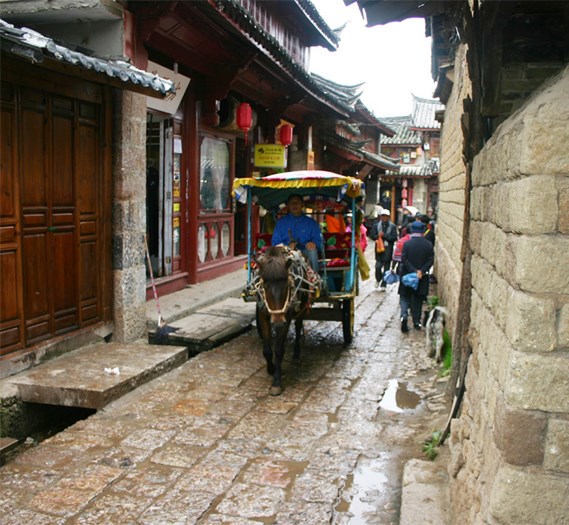
Above: Tea Horse Road is part of the city's past.
The short horseback ride along a portion of the 2,000-kilometre-long trek is intended to introduce visitors to the Road’s stunning features, like waterfalls, crystal clear lakes and jaw-dropping mountain views; but alas, an attendant at the entrance tells us there’s not enough daylight left and won’t let us mount the steeds.
My travelling partner wearing her brand new Prada stilettos is overjoyed at the news. Christina is disappointed but vows, “I’ll make it up to you tomorrow when we visit the (UNESCO World Heritage) Old Towns and Snow Mountain.”
Beautiful Lijiang is blessed with some of China’s most revered landmarks and tourist sites, top among them the ancient World Heritage “Old Towns” — Dayan (where the Tea Horse Road is located), Shuhe and Baisha, where the region’s majority Naxi people first settled when they arrived from Tibet around 400 BC.
Early the next morning, we first head off to see fan-shaped Snow Mountain, a virgin peak that rises 5,596 metres into the clouds and is noted for being the closest mountain to the Equator featuring a glacier. Its majestic snow-capped peak can be seen from everywhere in Lijiang.
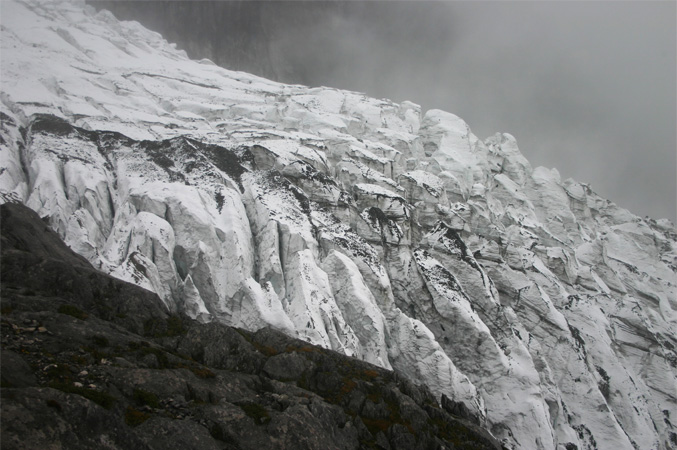
Above: Snow Mountain hold legendary status among the Chinese and is a revered landmark.
Christina says Snow Mountain, whose official name is Jade Dragon Snow Mountain, is revered by local tribes but it’s also a place of sadness.
“Couples who did not get their parents’ permission to marry in ancient times would often climb the mountain, hold hands and throw themselves off — preferring to die together rather than live apart,” she says.
The far side of Snow Mountain forms one side of legendary Tiger Leaping Gorge — another tourist highlight of Yunnan province that’s about a two-hour drive from Lijiang.
As we approach the granite behemoth, we notice a golf course spreading out from its base.
“That’s Snow Mountain Golf Club and it’s very famous — the longest course in the world (at 8,548 yards) with the longest hole, the par-5 18th that’s 711 yards long (both recognized by the Guinness World Records),” Christina informs us.
On the 20-minute-long cable car ride — also the longest in the world at 2,200 metres — to reach the glacier that sits more than 4,000 metres above sea level, Christina fills us with lots of facts about the minority people who live in the valley.
She tells us the Mosuo people, a matriarchal society and a branch of the Naxi who live around Lugu Lake, never get married.
“Mosuo women (as young as 13) invite boys to their room and if she gets pregnant, they still don’t marry. The children belong to the girl’s family and her brother becomes the father figure. Most Mosuo offspring never know who their real father is,” says Christina.
Hundreds of people are standing having their photographs taken in front of the majestic glacier when we arrive and we quickly grab the oxygen cans Christina suggests we purchase to help refill our lungs, which are now working overtime to compensate for the high altitude.
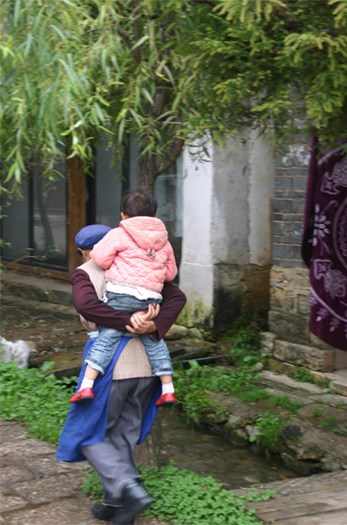
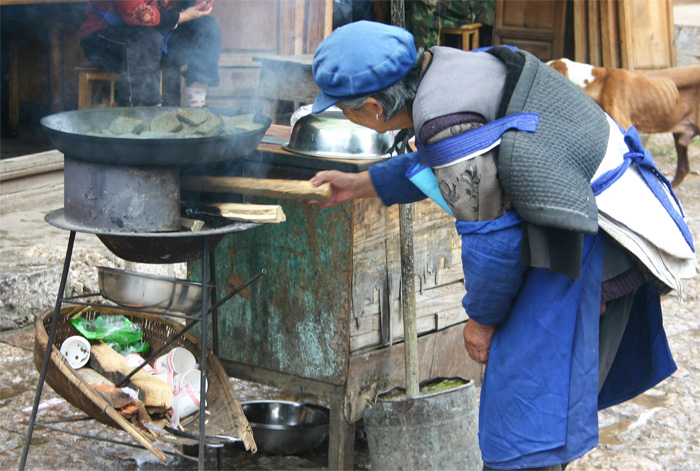
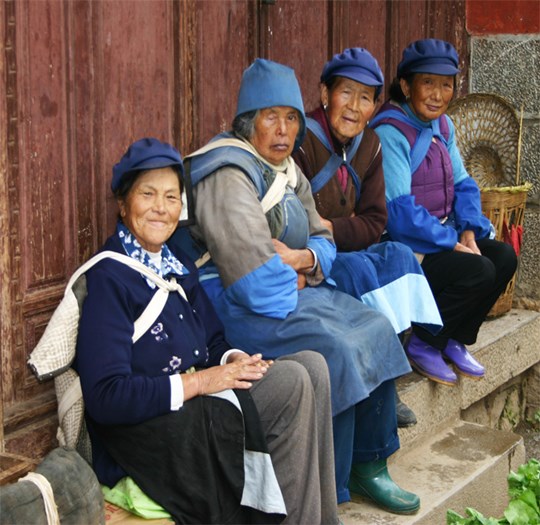
Above: Life has changed little for the old people of Lijiang.
Of course, the stunning view we are afforded leaves us breathless as well.
Our visit to the Snow Mountain is cut short by a sudden rain shower that rolls in. Christina says rapid weather changes on the mountain is the main reason its peak has never been conquered.
On the way back to Lijiang, Christina orders our driver to stop at Baisha Old Town, the political, commercial and cultural centre for the local Naxi people. Baisha’s history dates back more than 1,300 years and it remains a living museum where everyday life is played out much as it has over the centuries.
Village elders refuse to co-operate with the tourists trying to snap their pictures; Christina says the seniors fear the camera is stealing their souls.
The women of Baisha are embroidery masters whose colourful scarves and tableclothes are prized souvenirs. During the Cultural Revolution, however, thousands of Naxi embroidery masters were arrested and put in jail where many died. The village’s embroidery institute now teaches the youth of Baisha the delicate art.
Holy men known as Dongba are the spiritual leaders of these villages and guardians of the Dongba Scripture — ancient pictograms that trace the earliest existence of the Naxi culture.
The villages’ wooden homes and shops are held together without nails, which helps them withstand the earthquakes that ravage this area of China from time to time.
“We get a major earthquake every 50 years and the last big one was in 1996,” Christina tells her attentive listeners, who quickly deduce that the next major quake is not expected here for decades.
Stops at Shuhe Old Town, famous for its leather goods, and Dayan, where most of its historic buildings have been transformed into quaint inns and hostels, prepare us for Lijiang Old Town, the largest and most-visited of the four.
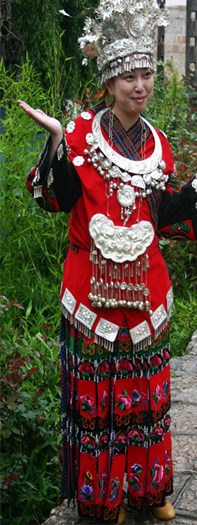
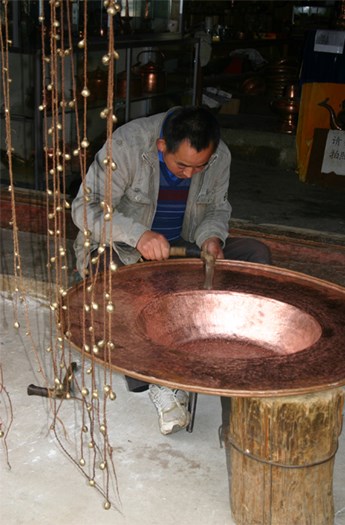
It’s market day in Lijiang Old Town and when we arrive we see carved yak skeletons piled high outside a meat shop.
Most of the historic homes here, however, have been transformed into cheap souvenir shops and that disappoints — this Old Town lacks the quaintness the others exhibit.
The earliest recorded history of Lijiang (pop. 1.2 million) can be traced back to the Warring States Period (476 BC – 221 BC) and under the Tang Dynasty (618-907) this region prospered thanks to trade along the Tea Horse Road.
The majority of homes and buildings in Lijiang Old Town were erected more than 800 years ago and the men who rode the Tea Horse Road would unwind on shaded Bar Street after their long, arduous journey.
Bar Street remains the Old Town’s entertainment district and on weekends modern music pours out of the old clubs.
Our tour ends in the main square where a man holding two horses suddenly appears. Dressed in traditional Naxi garb, he offers to take us for a ride.
“Maybe he’ll take you to the Tea Horse Road,” laughs Christina.
Lijiang is a treasure chest of history and stunning natural beauty that must be seen to be appreciated.
Information
• The best way to get to Lijiang is by air – direct flights are offered from most major cities like Beijing and Shanghai.
• Best time of year to visit Lijiang is April – avoid September and October, which is usually the rainy season.
• Tour East Holidays offers tours to Lijiang and the Tiger Leaping Gorge – call 1.877.578.8888 to plan your trip with a travel expert.
• Canadians need a visa to visit China.